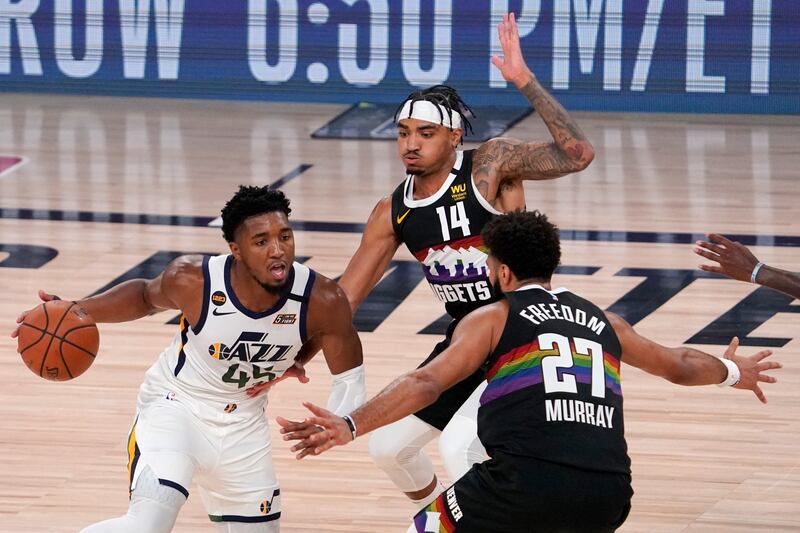After weeks of negotiations, the NBA and National Basketball Players Association announced Monday night that they have reached an agreement on the start of the 2020-21 season and have also agreed on financial amendments to the current collective bargaining agreement.
On Tuesday the NBA board of governors unanimously voted to approve the proposed agreements from the NBA and NBPA.

What was agreed upon?
A start date of Dec. 22 was set for the 2020-21 regular season, and each team will play 72 games.
Earlier on in negotiations, January and February start dates were floated as possibilities as the NBA tried to prioritize bringing fans back into arenas. Since game-night gate receipts, along with other game-night related revenue, accounts for roughly 40% of the NBA’s basketball related income (BRI: the money shared at a 50/50 split between owners and player salaries) the league really didn’t want to start the season with empty seats.
As it became clear that the coronavirus pandemic would further delay the reopening of arenas to fans, the NBA had to make sure that it was maximizing other revenue generating interests. Christmas Day showcase games along with other broadcast deals became important factors in negotiations. After all, the NBA is a business and the bottom line matters.
A 72-game regular season will allow the league to get back to a normal schedule in the fall of 2021.
The 2020 free agency window will open Nov. 20, just two days after the draft, and just 10 days before training camp is expected to begin
In addition to the scheduling agreements, the league has set the 2020-21 salary cap at $109.1 million and the tax level at $132.6 million, the same as it was last season.
Usually when revenue drops, as it did during the suspension of the 2019-20 season and bubble restart, the salary cap for the following year would reflect that decline. But since the collective bargaining agreement was not built for a global pandemic, the NBA and NBPA have entered into multiple negotiations over the last few months in order to offset lump-sum financial hits.
In a further attempt to spread out any steep revenue drops, the league will hold anywhere from 10%-20% of player salaries in escrow for the 2020-21 season and can do so for the following two seasons.
The league also announced that “teams’ tax payments will be reduced in proportion to any BRI decreases.” That means that if the BRI for the 2020-21 season drops by 40%, teams paying the luxury tax will have their bill discounted by 40%.

What does this mean for the Utah Jazz?
The Jazz left the NBA bubble after their Game 7 loss to the Denver Nuggets in the first round of the playoffs on Sept. 2. So in terms of scheduling, the Jazz are looking at an offseason turnaround of 110 days between their last game and the beginning of the 2020-21 season. For comparison, the 2019 Finals ended 132 days before the beginning of the 2019-20 season.
The Miami Heat and the champion Los Angeles Lakers are the teams that will be hit hardest by the Dec. 22 start date, which will come just 73 days after their last game in Orlando. Meanwhile there are eight teams that weren’t invited to the Orlando restart who haven’t played basketball since March.
“We are excited that the 2020-21 NBA season will officially tip off in December,” Utah Jazz president Jim Olson said in a statement. “The entire Jazz organization and its loyal fans have been eagerly awaiting the return of Jazz basketball to our home court at Vivint Arena. ... We want to thank Commissioner Adam Silver, the NBA and the National Basketball Players Association for their extraordinary efforts and shared commitment to starting the season in these unusual circumstances.”
In terms of the financial agreements, the proportionally reduced tax costs could give newly minted Jazz owner Ryan Smith some peace of mind in his first season at the helm. Even if the Jazz were to go over the tax threshold for the 2020-21 season, it most likely wouldn’t be by much, and with revenue expected to dip, Smith would be able to avoid lofty luxury tax costs.

What we still don’t know
Though the start date and the length of the 2020-21 season has been announced, and league sources have said that training camp is expected to begin on or around Dec. 1, we still don’t know official dates for training camp, what the preseason is going to look like, and a schedule for the 2020-21 season has not yet been released.
We also don’t know what additional changes will be made to the NBA schedule to include safety protocols and reduced travel.
“Public health and the safety of our players, fans and community are of the utmost importance, and we will continue to take guidance from the NBA and local health officials to set the appropriate standards that support the safest possible return to play,” Olson said.
Series play, resembling what MLB does during the regular season, is a scenario that has gained popularity and traction in negotiations, but the NBA still hasn’t made a final decision. There is also talk of including a play-in tournament at the end of the season to decide the eighth seed in each conference for the playoffs, as the league did in the bubble. But again, no official decision has been made.
There have been reports the league is going to try to have suites in arenas open for limited capacity to fans, but with surges in the virus these ideas could be suspended and vary wildly depending on local guidelines in each market.
Looking toward the completion of the 2020-21 season, the playoffs are a complete question mark. We don’t know if the NBA will attempt another bubble or how testing or a vaccine could impact decision-making.
There is still a lot to be decided and a lot that could change between now and next summer.


